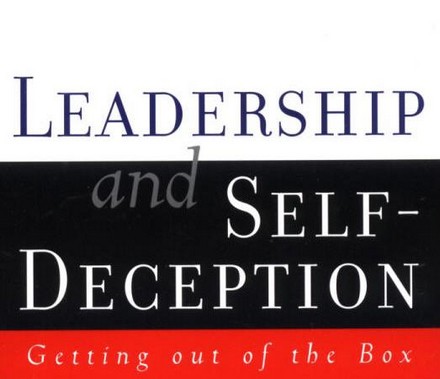
by MIMO Solutions | marketing, sales, social media, social media marketing, Social Networking, tips
Whether you’re an experienced social networker or just a newbie, here are 10 secrets to growing your target market network online:
1. Create an up-to-date profile and/or fan page
Before you begin a “friending” (i.e. request to become another’s friend), be sure that your profile is up-to-date with an accurate description of what you do, your interests, and your contact info. Make sure you include your website addresses. If you have multiple businesses invite people in your appropriate target market to become fans of your niche-specific fan page.
2. Follow the favorites
Follow leaders in your field/industry and “friend” them. This includes popular products, TV shows, or other specific interests of your target market. Anytime you make a friend request, include a personal note, as that will improve the likelihood that they will accept your request. Say something like, “I’m a big fan and I’d love to have you in my network on Facebook.” Once they have accepted your invitation, make comments about their status updates to help you get on the radar and in front of their thousands of friends.
3. Friends of friends
Take a look at the people in the network of your industry leaders, as they are probably part of your target market as well. Send friend requests to those of interest to you. When you friend someone that you only know by association, send a personal note as well, like “I discovered your profile in <name here>’s network and would like to get to know you better by adding you to my network.”
4. Use groups
Look for groups that may contain your target market. In your search for groups, use keywords that describe your niche, industry, geographic area, interests, or whatever other terms you might use to find members of your target market. Join and begin to participate in the group so that they begin to get to know you. Then pursue the member lists for good prospects, start with the members you’ve connected with or have commented on similar posts.
5. Invite your existing email lists and address books
You can use your existing email database to add people from your clients, prospects, and other current contacts if they fall within your target market definition. Add a note to the invitation and make sure you are clear and professional about your motivation.
6. Recommended friends
Most of the popular social networking sites will have a suggestion list for people you might know. These recommendations are pretty solid, because they are based on similar work history, mutual friends and interests. Take them up on their recommendation and add these to your network.
7. Add by interest or industry
Do a people search by job title, industry, geographic location, or interest. People with those terms in their profile will show up in your search, and you can request to add them based on common interests.
8. Build the relationship
Once you friend someone, you need to begin to get to know them and start building trust so that you become their top-of-mind expert in a particular area. Begin building the relationship by posting a quick “thank you” note on their wall, as well as a comment about something on their profile that interests you or in which you have in common. Watch for their status updates, as well, and comment on these when appropriate.
9. Create a group
Once you’ve got about 500 followers, create a group for your target market. Provide the group with useful content and ask questions to stimulate discussion and get the members to return to participate in the group. You can post articles, links to blog posts, or videos you have created. Invite group members to any free virtual or face-to-face events you’re hosting. This is where you really establish your expert status and credibility.
10. Integrate your marketing strategy
Once you have a good list of friends and credibility on the site, you can begin mixing in your marketing messages. Social networking sites are designed to be casual and personal, so don’t just copy an advertisement or sales messages. All you want to do is keep what you do and who you are on the top of your prospects minds. You can casually mention what you’re working on in your status, announce events, and make comments offering to help people with your product or service. Remember, people can remove or block you as easily as they added you in the first place.
No marketing strategy works unless you consistently implement it over time. As a newbie to Facebook, you might want to spend as much as 60 minutes per day researching friends and participating in groups. As your network grows, you may spend only 15 minutes 3 times per week on Facebook. The key to success is to put this strategy on your calendar and make it a routine part of your ongoing Internet marketing tasks.
Many of these social networking sites are strict and very particular about how its participants contact each other. Many sites limit the number of new invitations allowed in a given day or week. If you exceed this amount you can get penalized or removed for spamming. If you stick with about 50 per day, you should stay within most limits. If you ever receive a warning, you should stop immediately for that day and reduce your efforts moving forward.
While social networking is an inexpensive marketing tool, it can be effective in helping you grow your business. You should maintain your other marketing strategies, and simply add this strategy to your marketing mix. A well-rounded internet marketing plan includes social networking, and it could mean that your prospect well will never run dry.

by MIMO Solutions | communication skills, marketing, sales, social media, tips
 |
| Generate Social Media Engagement |
I just read an email tip about how to use social media for marketing your business and the gave 7 easy steps to follow. Sounds good doesn’t it?
Step number 4 caught my eye though… Generate engagement. Sounds even better on paper! I will just get thousands of follower and then I will get them engaged in a living discussion about my business and they will have to buy something… They won’t have a choice!
If you can’t tell, I am being sarcastic here. If it were as easy as crossing “generate engagement” of the checklist then everyone would be successful already, and we would all be on permanent vacation. This is why, I have started this blog, “Following The Like.” I have read dozens of books, articles and emails about how to attract followers, but very little about what happens after the “like.”
So you can communicate will thousands or millions of people with a simple status update…
- How does that make you money?
- What do you say?
- How exactly do you generate engagement following the like?
I have an answer for you, but you are not going to like it… You have to work hard and you have to be able to sell. These days, it seems like everyone wants to take the easy way out. They want the quick buck, the magic words, the social media bullet that destroys your old sales records and shoots you into early retirement. Unfortunately, it doesn’t exist.
Communication skills, sales skills, and the ability to engage a person in a meaningful discussion are learned and perfected over time. They don’t just happen, and they don’t happen quickly. Sure some people are born with the gift of gab, but that doesn’t mean anyone will buy from them, and more often than not they over-talk people and end up failing to listen. Great communicators and salespeople are trained craftsman. They study communications, psychology and motivation, and they practice and perfect their delivery.
Over time, on this blog, I will attempt to help you do the same. I will share thoughts, tips and stories to help you perfect the art of communication in order to motivate and mobilize your social media followers into fans and buyers.
Here is teaser of my step one:
Stop what you are doing and listen! Think about it for a second. We have a social media world larger than the population of the US online posting about themselves. People are starved for attention, and they are dying for a person who listens and who cares. People love great listeners, people love people they can relate to, people love to belong, and they love to be heard.
I will share more later, but for now just listen and be real. People are bombarded with thousands of sales messages a day; adding your two cents will most likely not be heard anyway. So many companies are out there pushing products, it is impossible to pay attention to them all. So what is a business to do? Listen. How many companies can you name that are listening and following your updates? How many are responding with thoughtful, emotionally real comments without a sales message? That crowd is a lot smaller.

by MIMO Solutions | Smarketing Blog
I have been reading Leadership and Self-Deception this week, and the book is amazing…
Not only do I love the psychological and communication principles, but I love the conversational style of the book. I have read about 110 pages in just a couple nights!
I highly recommend this book for anyone. You do not have to be in leadership to appreciate the principles as they apply to marriage, friendships, family and so much more.
However, if you are in a leadership position, this is a must-read!
Check it out:
Every time you want to make any important decision, there are two possible courses of action. You can look at the array of choices that present themselves, pick the best available option and try to make it fit. Or, you can do what the true entrepreneur does: Figure out the best conceivable option and then make it available.
Read more

by MIMO Solutions | Smarketing Blog
What if you inherited a machine that was guaranteed to make you happy, but you had no idea how to operate it?
Now, if you are like most folks, you’d probably move heaven and earth until you figured out how it worked, wouldn’t you? The fact is, you were born with all the resources to make yourself very happy and successful. Unfortunately, you didn’t arrive with an instruction manual.
It has been left up to you to figure it out. Isn’t it strange, then, that most folks don’t even bother? They don’t read psychology, they don’t take classes or seminars on human behavior, and they don’t work with counselors, teachers or other professionals who could help them make the most of their potential.
Instead, they are content to bump along, not really expecting much out of themselves or of anyone else. Oh, they may go to a lot of trouble to learn to speak Chinese or to scuba dive, or even seek out the latest computer software. But they never take the time to learn about their own “software” – how their mind works.
Do you suppose this is because no one has ever told them that we are all programmed to achieve happiness and success? It is true. All we have to do is learn to operate the program. By that I mean educate ourselves, set goals, control our thoughts and get rid of glitches in the program that were put there by others who didn’t know better.
Sound simple? Well, it is. If you want to be happy, you can, but first you may need to do a little research.

by MIMO Solutions | Smarketing Blog
If you are interested in pursuing personal growth, does this mean you are a selfish person? Today, let’s look at how personal growth affects relationships.
There’s no question about it. We need to have a caring relationship with ourselves before we can expect others to do so. However, being interested in personal growth doesn’t mean you’re selfish. In fact, it’s quite the contrary.
In his book, “The Psychology of Romantic Love,” Nathaniel Brandon wrote, “The first affair we must consummate successfully is the love affair with ourselves. Only then are we ready for other love relationships.”
You see, no matter how concerned we are about others, we are ultimately responsible only for ourselves. If we feel inadequate and victimized, then we have no power to offer another person security and strength.
Self-development means being the best you can be and giving the best you can give. It means asking yourself, “If I were living with me, would I want to stay around?” Then, you change what you need to change according to your answer, without making a big deal about it.
You see, although there are tremendous personal benefits to self-development, it is, perhaps, in your relationships with others that a commitment to personal growth will bring you the most gratifying changes.
– Lou Tice

by MIMO Solutions | Smarketing Blog
Have you ever had someone give you a sales pitch on something you clearly had no need for or no interest in? You stopped listening and began to think of the excuses you would use just to get out! Sound familiar?
Presentation of a detailed solution without first clearly understanding the problem and more importantly the ramifications of the identified problem is a recipe for objections and excuses. It leads to wasted time, energy and a drain on self-esteem. Excuses from prospects create overloaded pipelines which in turn creates a complacency in your sales people with regard to new business development.
The typical traditional salesperson spends his or her career wasting their time pitching, presenting and demonstrating towards surface issues, or problems that their prospect has been managing to date. The premature sales pitch is then followed by the handling of objections, which are often excuses and reasons for not making a decision. After all, would you make a buying decision regarding an issue that in your own mind is not essential or critical, in particular when your budget is tight?
Unpaid consulting starts when sales people cross the line between diagnosing the prospect’s problem and detailing the solution. In other words the sales person provides a solution without first uncovering the negative effects the prospect suffered in the past and future negative effects the prospect will incur if the problem isn’t fixed.
This eagerness to provide premature solutions can be attributed to the traditional sales training provided by most companies to new sales recruits: Feature-Benefit based training. Therefore, unknowingly companies put their sales people in a position where they automatically try to fix a problem the prospect has not yet concluded requires a fee based solution.
When sales people begin to present detailed solutions, without first allowing the prospect to acknowledge a problem exists, and that this problem merits a solution they immediately begin acting as unpaid consultants. It is this common sales method that wastes your company’s time and money and reduces your opportunity for growth.

by MIMO Solutions | Smarketing Blog
High self-esteem is a desirable quality, but you can’t have it without self-acceptance.
Self-acceptance is an absolutely essential component of having high self-esteem, but what does self-acceptance mean? Some people think accepting yourself just as you are means that you condone or are proud of your faults – but that is a mistaken idea. You see, to “accept” means to experience the full reality of, without denial or avoidance. I can accept the reality of things about myself that I don’t like or condone at all.
For example, suppose I’m feeling envious of my friend who has a better job. If I accept myself, I can allow myself to acknowledge this envious feeling and take the time to examine and think about it. As I do this, I’m not concerned with judging it as bad or weak, but I am concerned with being aware. Perhaps my awareness will show me that I’ve wanted something more than I knew, and I’ll need to think about that too.
You see, you can’t grow out of your unwanted feelings if you’re not aware that you have them, and if you judge your feelings as bad or weak you’ll be inclined to push them down into your subconscious where they’ll express themselves in ways you can’t control.
So the next time you find yourself thinking something you feel guilty about, try practicing awareness and self-acceptance. This means refusing to be in an adversarial relationship with yourself. It’s one of the basic building blocks of self-esteem.
Lou Tice

by MIMO Solutions | Smarketing Blog
We all want our children to be safe and happy, but is there such a thing as too much safety, too much protection?
Raising children is an exciting process, but sometimes it can seem a little too exciting, especially when you have to call the plumber to get your kid’s hand unstuck from the toilet! It is quite the balancing act, and it takes a lot of nerve and devotion on the part of parents.
How much should parents do to keep their kids safe, and how much protection is too much? There is a fine line between mothering and smothering, between fathering and bothering. Overprotective parents, in their desire to save life, may suppress it instead, as they project their own fears onto their children. However, what they are really doing is protecting their own comfort.
Too many adults go through life afraid of all sorts of things – dogs, heights, meeting new people, going barefoot, riding horses, you name it – because of repeated fear messages and warnings given them by overprotective parents when they were small. Don’t get me wrong, there are palpable dangers “out there,” and it is smart to be wary. The question is, do we really need to be “helicopter” parents, always hovering over our children?
Teach your kids to be cautious when it’s necessary. But also teach them to risk, to live and laugh and test their own limits. Be there with a guiding hand and an encouraging word, and be ready to haul them away from real danger. Be mindful that you don’t squelch their spirits in your quest to keep them from harm.
If you can teach them how to take calculated risks and really live life fully as children, you will be giving them a wonderful blessing that will serve them well as adults.
Managers, how many times do we do this with our employees?

by MIMO Solutions | Smarketing Blog
“It looked as though someone had taken a great vat of gold and poured it over the mountain peak and its surrounding slopes. The flowers were planted in majestic, swirling patterns, great ribbons and swaths of deep orange, creamy white, lemon yellow, salmon pink, saffron, and butter yellow. Each different colored variety was planted in large groups so that it swirled and flowed like its own river with its own unique hue. There were five acres of flowers.
‘Who did this?’ I asked.
‘Just one woman,’ she answered. ‘She lives on the property. That’s her home.’ She pointed to a well-kept house, small and modestly sitting in the midst of all that glory. We walked up to the house.
On the patio, we saw a poster. ‘ANSWERS TO THE QUESTIONS I KNOW YOU ARE ASKING’ was the headline. The first answer was a simple one – ‘50,000 BULBS’ it read. The second answer was, ‘ONE AT A TIME, BY ONE WOMAN. TWO HANDS, TWO FEET, AND ONE TINY LITTLE BRAIN’. The third answer was ‘BEGAN IN 1958’.
For me, that moment was a life-changing experience. I thought of this woman, whom I had never met, who, more than 40 years before, had begun, one bulb at a time, to bring her vision of beauty and joy to an obscure mountaintop. Planting one bulb at a time, year after year, this unknown woman had forever changed the world in which she lived. One day at a time, she had created something of extraordinary magnificence, beauty, and inspiration. The principle her daffodil garden taught is one of the greatest principles of celebration.”
“That is – learning to move toward our goals and desires one step at a time, often just one baby step at a time and learning to love the doing, learning to use the accumulation of time. When we multiply tiny pieces of time with small increments of daily effort, we too will find we can accomplish magnificent things. We can change the world.
‘It makes me sad in a way,’ I admitted. ‘What might I have accomplished if I had thought of a wonderful goal 35 or 40 years ago and had worked away at it ‘one bulb at a time’ through all those years?
Just think what I might have been able to achieve!’
She summed up the message of the day in her usual direct way. ‘Start tomorrow,’ she said.
She was right. It’s so pointless to think of the lost hours of yesterdays. The way to make learning a lesson of celebration instead of a cause for regret is to only ask, ‘How can I put this to use today?’
Use the Daffodil Principle. Stop waiting –
Until your car or home is paid off
Until you get a new car or home
Until your kids leave the house
Until you go back to school
Until the kids go to school
Until you finish school
Until you clean the house
Until you organize the garage
Until you clean off your desk
Until you lose 10 pounds
Until you gain 10 pounds
Until you get married
Until you get a divorce
Until you have kids
Until you retire
Until summer
Until spring
Until winter
Until fall
Until you die.
**Did you notice it makes the shape of a vase?? I noticed that when I copied it over. It’s a vase for your daffodil.
There is no better time to start than right now.
Don’t be afraid that your life will end.
Be afraid that it will never begin.

by MIMO Solutions | Smarketing Blog
How big is your comfort zone? Is it growing or shrinking? All of us live inside an area I call a comfort zone. It’s the imaginary space containing all the activities we have done often enough to feel comfortable about. It also contains our ideas about where we belong, how we should live, what we do socially, and so on.
You can visualize this zone of comfort as a circle, if you like, but the wall of that circle is not really there to protect us. It is made of fear and self-imposed limitations. We like to believe that the wall keeps us safe, but perhaps you’ve noticed that it doesn’t work that way.
What it keeps us from, in truth, is getting all the things we want most. If we are willing to venture outside of it often enough, we overcome our fear and our zone of comfort expands. Not only that, when we expand our comfort zone in one area, it automatically expands in others, as well. However, if we give in to our fears, that zone contracts. For some poor folks, their comfort zone is just about the size of their apartment. There they sit, making up reasons why it’s better for them to stay put, convincing themselves they are better off.
So, what’s the answer? Get up, get moving, and conquer your fears by doing what you need to do. Being ruled by fear is not living safely. In fact, it’s not living at all.

by MIMO Solutions | Smarketing Blog
It’s that time again, everyone is busy filling out their NCAA brackets and the country has basketball fever. Of course, when I say “Stop March Madness” I don’t mean the NCAA tournament. I love that.
I mean the madness of doing the same thing over and over again and expecting different results. It usually kicks in about now as the first quarter winds up and you are wondering why you are at the same or slightly below last year’s numbers.
What usually happens is that you decide to crank it up a notch and do more of the same habits that have led you to this point in the first place. We call that the gerbil wheel.
If you believe that there might be a better way, then we need to talk. I help people create real positive change in themselves and their organizations. It doesn’t come easy, but it is possible.
Imagine for a second what your life and job would be like if you worked smarter and not harder. If you broke the rules and increased your results while decreasing your physical effort. Imagine what it would feel like to live on “goal time” and not “clock time.” What that means is that if you have hit your numbers and goals for the week, then call it a job well done and go watch some basketball. Instead of staring at the clock and pushing papers and reading emails until 5pm, go out and enjoyed your life.
Do you still believe that is possible? Give me a call and we can talk about how to make those goals, or any for that matter, a reality in your life. It is possible and we have done it for thousands of companies in over 30 countries. Check us out at www.effectivesales.net, call 816-505-2500 or email [email protected].
If you don’t believe that you can do any better or that you have to work harder to get more done, then quit reading and get back to work. We’ll see you in front of the TV for the second half of the late game…











